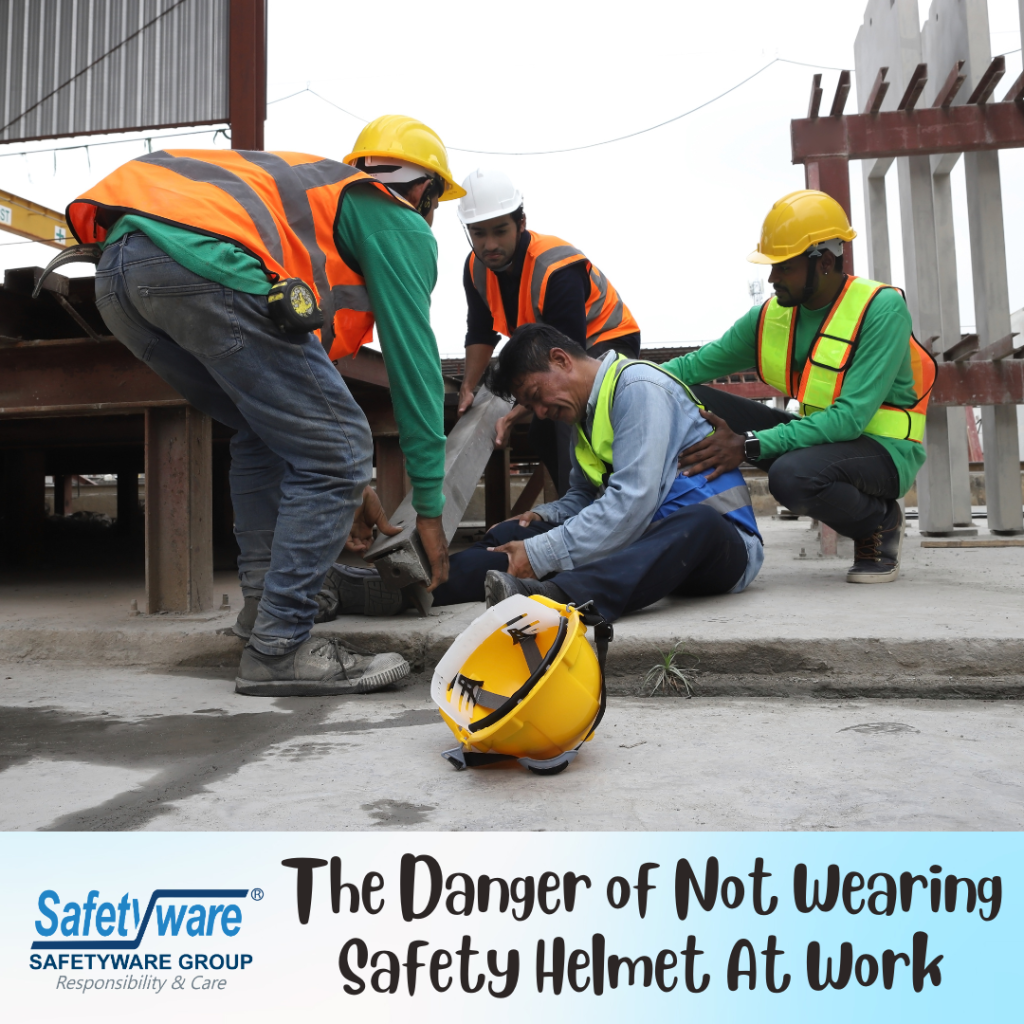Safety helmets are a critical piece of personal protective equipment (PPE) designed to protect workers from head injuries in hazardous work environments. Failing to wear a safety helmet at work can expose individuals to various dangers and risks, including:

1. Head Injuries:
The most obvious danger of not wearing a safety helmet is the increased risk of sustaining head injuries in the event of accidents, falls, or falling objects. Head injuries can range from minor cuts and bruises to severe traumatic brain injuries, which can have long-term consequences on an individual’s health and well-being.
2. Traumatic Brain Injuries (TBI):
A blow to the head without the protection of a safety helmet can result in traumatic brain injuries, such as concussions, contusions, or skull fractures. TBIs can lead to cognitive impairments, memory loss, personality changes, and in severe cases, permanent disability or death.
3. Impact from Falling Objects:
In industries like construction, manufacturing, or forestry, workers are at risk of being struck by falling objects or debris. Without a safety helmet, individuals are vulnerable to head injuries caused by the impact of these objects, which can result in serious harm or fatalities.
4. Electrical Hazards:
In environments where there is a risk of electrical hazards, such as construction sites or utility maintenance, not wearing a safety helmet can increase the likelihood of electric shock injuries. Safety helmets with electrical insulation properties provide protection against electrical hazards and prevent serious injuries.
5. Penalties and Legal Consequences:
Failure to comply with workplace safety regulations that mandate the use of safety helmets can result in penalties, fines, or legal consequences for both employees and employers. Non-compliance with safety protocols not only jeopardizes individual safety but also exposes organizations to liability and reputational damage.
6. Reduced Productivity and Efficiency:
Work-related injuries resulting from not wearing safety helmets can lead to absenteeism, reduced productivity, and increased downtime for both the injured worker and their colleagues. Workplace accidents disrupt workflow, impact project timelines, and incur additional costs for employers.
7. Psychological Impact:
Experiencing a head injury due to not wearing a safety helmet can have lasting psychological effects on individuals, including anxiety, fear, and post-traumatic stress disorder (PTSD). The emotional toll of an injury can affect an individual’s mental health and overall well-being.
